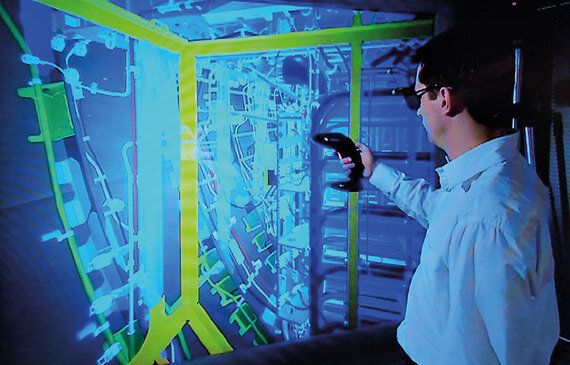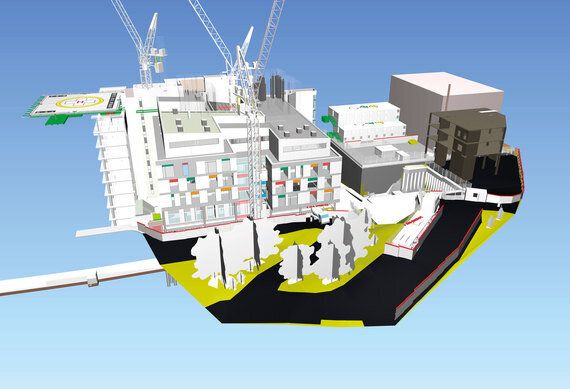Computer game designer, video games tester, and working in cinematics for Hollywood movies are high tech dream jobs for many. Civil engineering, on the other hand, is often associated with muddy boots, hammers, hard hats and high vis vests. What isn't obvious is that civil engineering is in fact distinctly linked to the aforementioned occupations; innovation in the construction sector is pushing the use of up and coming technologies such as augmented and virtual reality. These tools can help bring life to situations, buildings and environments.

The civil engineering and construction sector is now a mix of engineers and those from a wide variety of other backgrounds.
Games like Minecraft allow users to build structures from a variety of cubic blocks, which represent different materials and products, with players interacting together over the internet to design and build environments. If anything, doing this virtually with others in the construction sector is even more fulfilling - not only do you get to create new spaces virtually which cross the borders between reality and virtual existence, you watch the worlds you develop come to life as they are constructed in the real world.
We are now heading into the next industrial revolution: the digital age. Civil engineering and construction are also very much in the forefront of this digital age. Building 3D models is already part of the standard construction process (starting in the design stage) and these are taken through to site. Modelling construction objects and processes beforehand limits unforeseen clashes and allows us to trial options without the cost of re-building in real life. We are now at a stage where we are moving into further dimensions. 4D models are used to take the construction process through time, allowing us to simulate the whole construction process virtually, before mobilising to site. Other dimensions allow companies to model costs, life-cycle and other variables.

Civil engineering companies are making the most of emerging technologies to aid in the design and construction process. This is an example from a project built by the engineering firm Laing O'Rourke.
The civil engineering industry is now entering the gaming and simulation world. 3D models can have visuals and material functionality added to them, with movement of people and vehicles to create a virtual environment. Even games packages like 'The Sims' are pretty much evolutions of architectural design packages, originally being developed by architects to model the flow of people through buildings, effectively creating the game.
Augmented reality is a view of a physical real life which has elements that are augmented (or further enhanced) by computer-generated sensory input such as sound, video or graphics. It is technology which enables the blending of the digital world with the real world. It uses a camera view and uses markers to map visuals in 3D space to put it in context with the real world.

Get ready to use your smart phone and tablet at construction sites, where billboards will soon display augmented reality tags, showing 3-D images videos of what to expect during and after construction.
Currently augmented reality is experienced through the use of a mobile device with a camera - such as a smart phone or tablet. However, in the future, headwear such as the Google Glass, may be able to provide these experiences. There are already lots of augmented reality games (such as those commonly available on PS Vista) but the construction industry is using augmented reality to communicate with clients and the public so that we better understand what is happening during (and after) the construction process.
Virtual reality has been used by pilots in the airline industry for training and simulation purposes. In construction, these tools not only provide clear and engaging communications to clients, but are also being used with construction site workers so that they can easily visualise that they are going to build and how they will do it. This increases both health and safety for workers as well as productivity on site. It can also be used to train people in how systems will work in virtual reality before they need to operate the real thing.
There is a massive movement towards wearable technology and it won't be long until we see engineers and workers getting a whole new perspective by wearing devices that are similar to Google Glass. The device will allow them to see information about a building or project in their eyepiece. They will be able to access project related information via the device, for example the project manager or site supervisor's contact details.
Using tablets and possibly gesture control devices offers a more hands on way to work with 3D models (in a similar way to using things like the Nintendo Wii controller). Technologies like the Oculus Rift, which allows a prospective customer, designer or engineer with a stereoscopic headset and Xbox controller to walk around and explore a virtual 3D model of a building is a great example.

Devices on the market such as Vizux M2000AR enable on the go augmented reality, overlaying full colour data onto the world around you.
Playing with virtual reality and video game toys, watching your creations come to life, and getting paid to do it. Civil engineering and the construction sector have hit the digital revolution.
